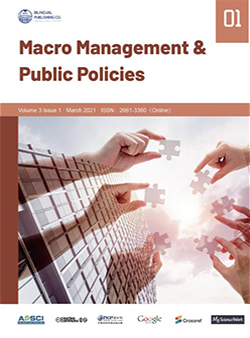-
1898
-
1434
-
1073
-
938
-
824
A View of Beijing’s Traffic Policy: Evaluation on the Policies Released in 2010 to Ease Traffic Congestion
DOI:
https://doi.org/10.30564/mmpp.v3i1.3000Abstract
In today’s society where the economy is developing rapidly and the process of urbanization is accelerating, the traffic in major cities in China is facing tremendous pressure. The economy of Beijing has developed rapidly, its population is dense, the living standard of people has improved significantly, and the number of cars has increased dramatically. From the end of 2005 to the end of November 2010, motor vehicles in Beijing increased from about 2.58 million to about 4.69 million. The problem of traffic congestion has become more prominent, affecting the daily lives of the residents.
Keywords:
Traffic policy, Beijing traffic, Congestion, Policy interventionReferences
[1] Talukdar, M. H. (2013). Framework for traffic congestion management. Economia. Seria Management, 16(1), 54-64.
[2] Zhang Fan. (2014). Research on the impact of car lottery policy on Beijing’s motor vehicle ownership. Xiamen Science and Technology, (1), 57-62.
[3] Mahmud Hassan. Framework for Traffic Congestion Management [J]. Economia: Seria Management, 2013, (06): 54-65.
[4] Wang Hongxia. (2009). Urban system construction in the process of multi-centered spatial evolution: A study of Shanghai as an example. Shanghai Economic Research, (1), 13-22.
[5] Wu Di. (2016). Research on Traffic Congestion in Beijing and Countermeasures (Master’s thesis, Minzu University of China).
[6] Fan Wei. (2016). Research on the Causes of Traffic Congestion in Beijing and Government Governance Countermeasures (Master’s thesis, University of International Business and Economics).
Downloads
How to Cite
Issue
Article Type
License
Copyright © 2021 Author(s)

This is an open access article under the Creative Commons Attribution-NonCommercial 4.0 International (CC BY-NC 4.0) License.




 Xu Wang
Xu Wang

